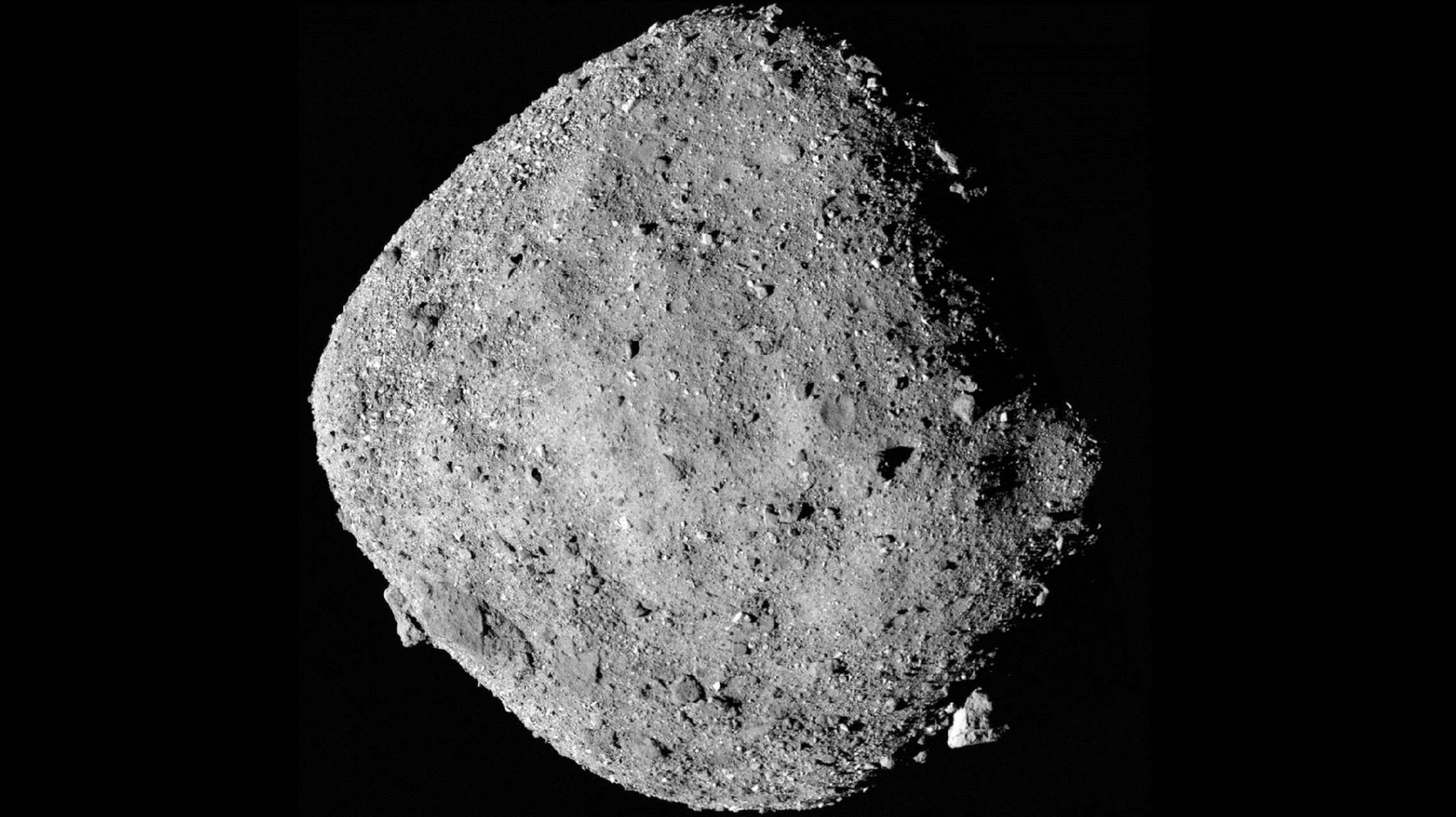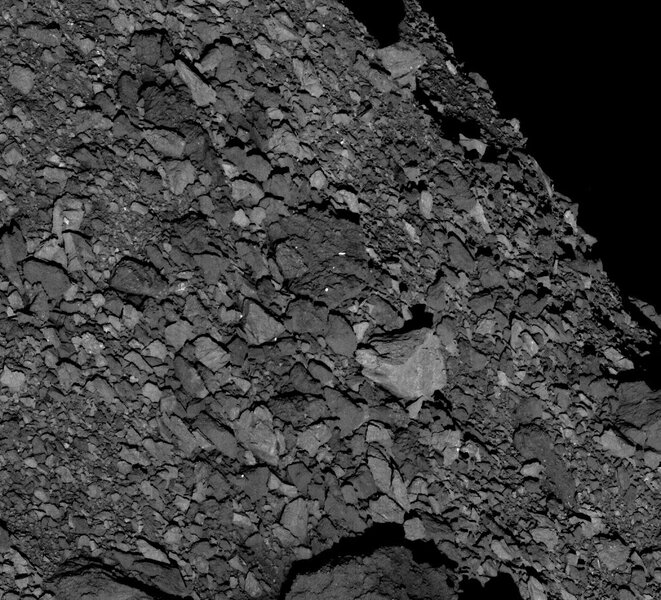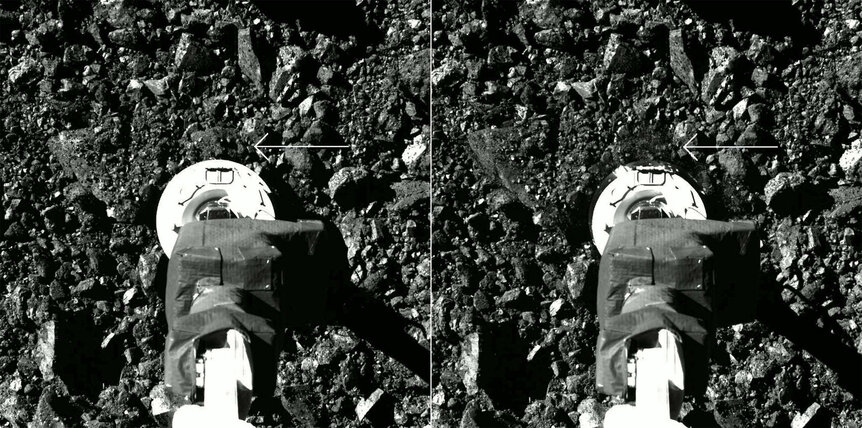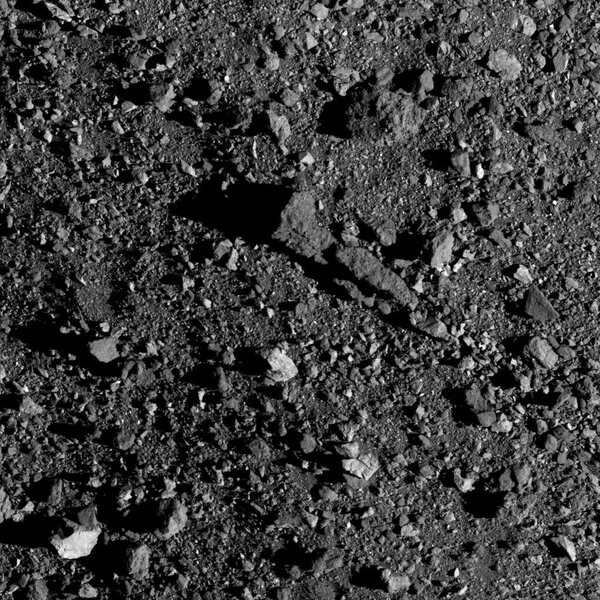Create a free profile to get unlimited access to exclusive videos, sweepstakes, and more!
Why is the asteroid Bennu’s surface rocky and not smooth?
Small asteroids may be more like demolition pits than beaches

When the OSIRIS-REx spacecraft arrived at the tiny asteroid Bennu, scientists expected the wee world to look like a beach. Instead, it looked like a construction site.
Scientists now think they know why.
Bennu is an asteroid about half a kilometer across, and shaped like two Apollo Command Modules connected base-to-base. It's what's called a rubble-pile asteroid: Basically a sack of rocks held together by gravity.
Back in the day we used to think that asteroids were monoliths, just big solid rocks, but that changed once we saw many small ones up close with spacecraft. Rubble piles are common, if not ubiquitous. The thinking is that an asteroid collides with another and the impact shatters them, and if the impact speed is low enough the pieces come back together due to their own gravity. What's left is a pile of rubble.
Over time the surface erodes due to micrometeorite impacts, solar wind, and even thermal stress as the surface rotates into and out of sunlight (the constant expansion and contraction of the rocks wears them down), generating tiny grains called regolith. So when OSIRIS-REx, the spacecraft sent to Bennu to investigate its surface, arrived there, it was expected there would be lots of pebbles, sand, and even dust strewn about, more like a rough beach.
Instead, regolith was relatively rare, and the surface looked like a construction site after a demolition, just rubble everywhere. Why no regolith?
The rocks covering Bennu are porous, like pumice. There's no air on the asteroid, so these small holes are empty, a vacuum. Rocks like this take a while to heat up when sunlight hits them, and are also slow to cool at local night. How rapidly something heats and cools is called its thermal inertia, and porous rocks have high thermal inertia.
Regolith, made up of unconsolidated particles, is the opposite: It gets hotter during the day than rock, and cools faster once the Sun sets.
OSIRIS-REx has cameras onboard that can detect thermal emission in the infrared, and can map how quickly different parts of Bennu heat up and cool off. What the scientists found is that where the rocks on the surface are porous, less regolith is seen, and the regolith tends to be where the rocks are more solid. Why is this?
Compressibility. If a small rock slams into Bennu and hits a solid chunk on the surface, it'll break up that chunk into smaller pieces, making some amount of regolith. But if it hits a porous piece a lot of that energy will go into compressing that rock, not shattering it. Much less regolith is made, if any. The same is true for thermal stress; the porous rocks don't undergo as much day/night cycle stress a solid rock, so they don't break down as much to create finer particles like regolith.
Pretty cool. Because of this the scientists predict that solid stony asteroids will tend to have more regolith than crumbly ones like Bennu (and Ryugu, another small asteroid recently visited by the Japanese spacecraft Hayabusa2), which are high in carbon and therefore called carbonaceous asteroids.
A subset of carbonaceous asteroids are the carbonaceous chondrites, which are rich in breccias, rocks that have small or even fine-grained particles mixed in with bigger pieces. The compaction of carbonaceous asteroids like Bennu over time may help them cement all this stuff together, making them carbonaceous chondrites.
Besides the cool science of all this there's also a streak of self-interest here. If an asteroid is on an impact trajectory with Earth, the best thing we can do is push it out of the way by, for example, slamming a spaceprobe into it. That small change in velocity can move the asteroid onto a path that misses Earth.
But if the asteroid is porous that method doesn't work as well. A lot of the momentum of the spacecraft is used up in compacting the rocks instead of moving the asteroid as a whole, and the efficiency of the hit is lowered. Instead, we might have detonate a nuke very close to the surface, using the huge flash of heat to vaporize rocks there; the suddenly expanding gas will push on the asteroid like a rocket and move it onto a new path. But we need to know if an asteroid is porous or solid before we launch such a mission to save the world. This new study may help inform such an endeavor.
OSIRIS-REx stands for "Origins, Spectral Interpretation, Resource Identification, Security-Regolith Explorer". The "regolith explorer" part has turned out to be pretty important to the "security" part. Bennu itself is a Potentially Hazardous Asteroid, one that's bigger than 140 meters wide and gets within 7.5 million kilometers of Earth; in fact it gets close enough to Earth that there's a 1-in-2,700 chance of an impact in September of 2182. That's long odds and a long time from now, but better safe than sorry. Studying it and others like it is A Good Idea™.
I'm a big fan of asteroid science, but I'm also a big fan of them not hitting us. This study makes it a win-win.





























